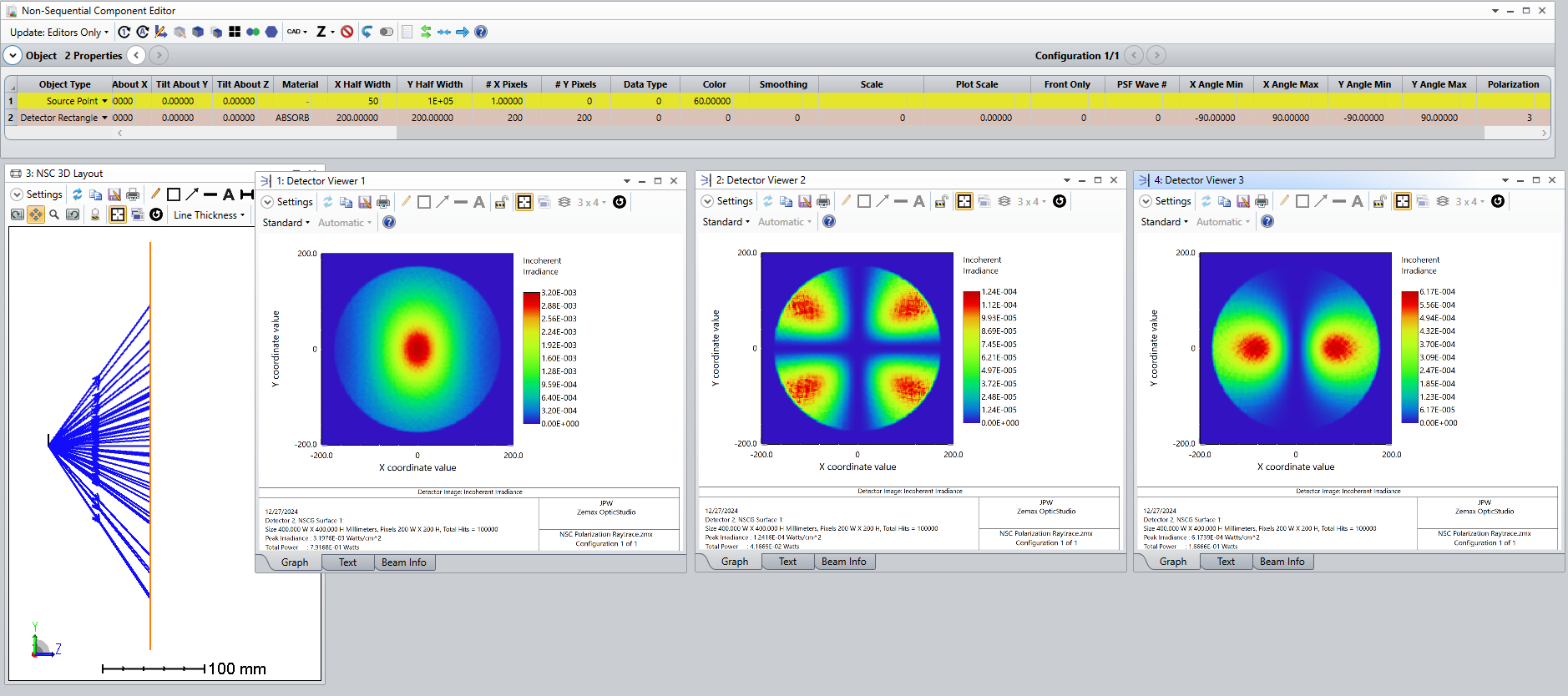Hello there friends from the Zemax community,
Once again, I would like to ask for your guidance/help with something that I need to implement.
I am interested in performing a polarization ray-tracing analysis in non-sequential mode. Let me explain a bit more about what my situation and setup is.
I start from some FDTD simulations from where I extract far-field information (Here I model a single point emitter).
Since I am assuming that there is no source of decoherence, from my FDTD simulation I am able to extract values of field components (Ex, Ey, etc) that match to a single wavefront surface. In summary, I have a point source for which I can extract the far-field information.
Using these field components, I have managed to generate the Poynting vector and consequently used this information to set up a sequence of rays which I import into Zemax. In this case, for each ray I have the direction cosines and the relative intensity which corresponds to my previously calculated Poynting vector.
In general this works nicely and I was able to run my initial ray tracing analysis.
Now, I would like to trace not only the “field intensity” but the field components (i.e Ex and Ey) and obviously obtain information on how these change as they propagate through my optical system.
At the end, I want to apply some diffraction integral expression which requires the knowledge of field components and not just the intensity associated to the rays. This is the main reason behind my interest in doing these polarization ray-tracing analysis.
Any comments on how to do this? I am not sure if this is something that could be supported in the non-sequential mode?
Any comments and feedback will be appreciated!




